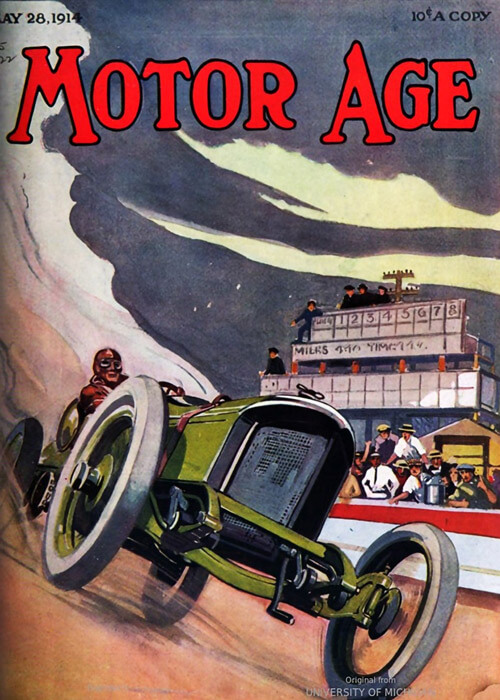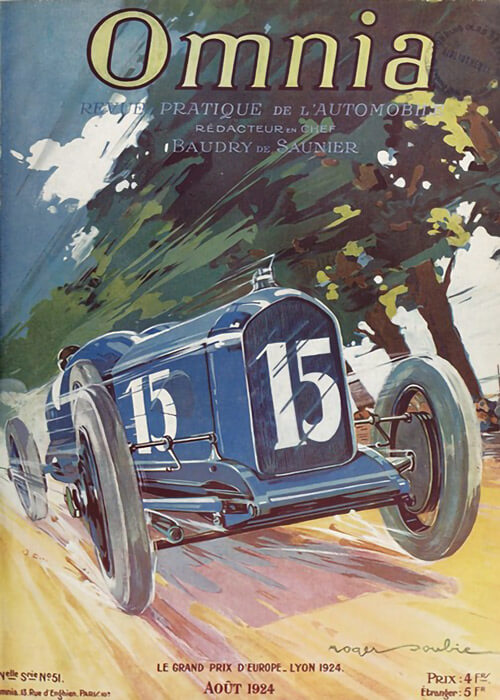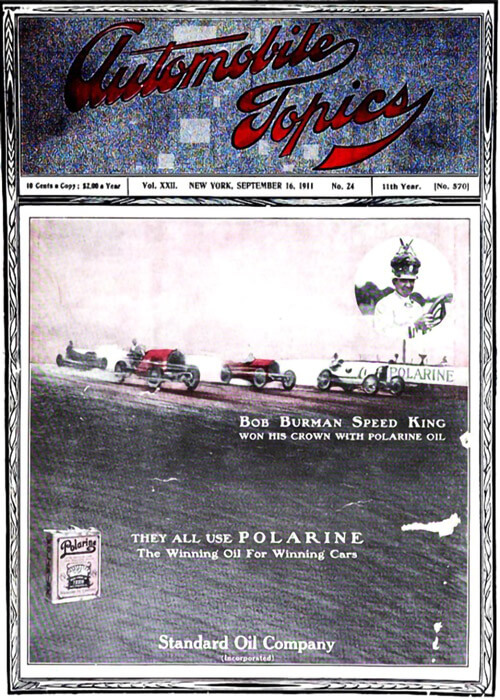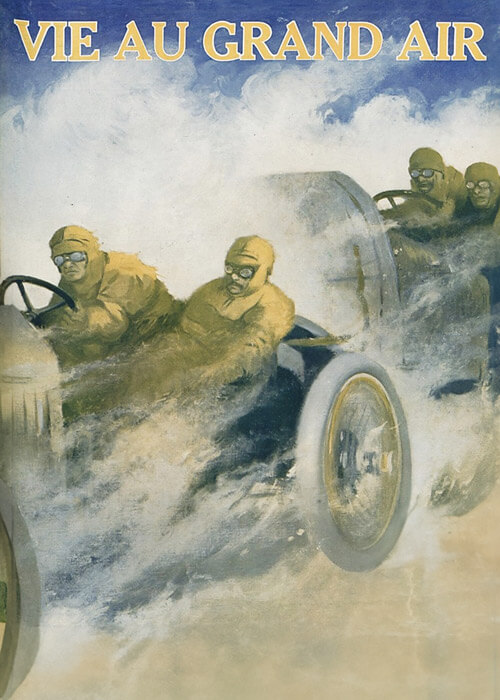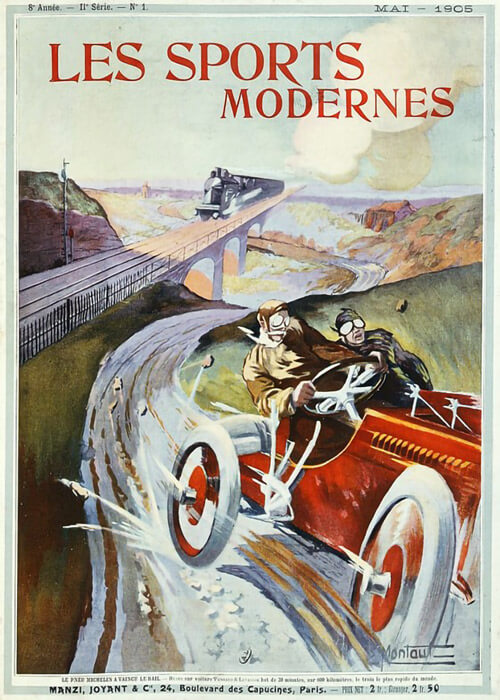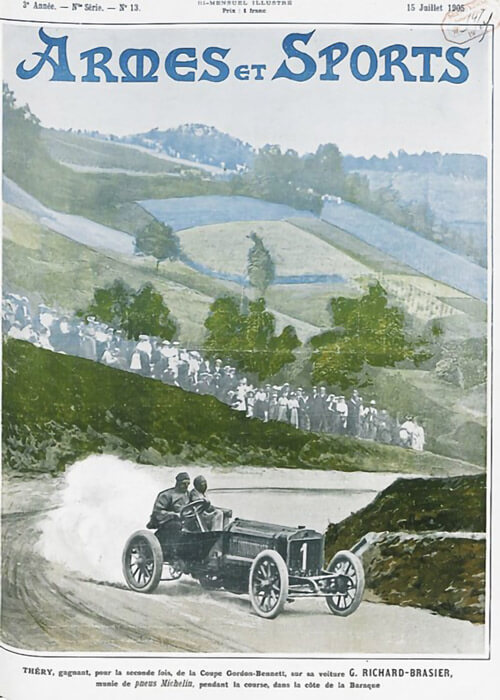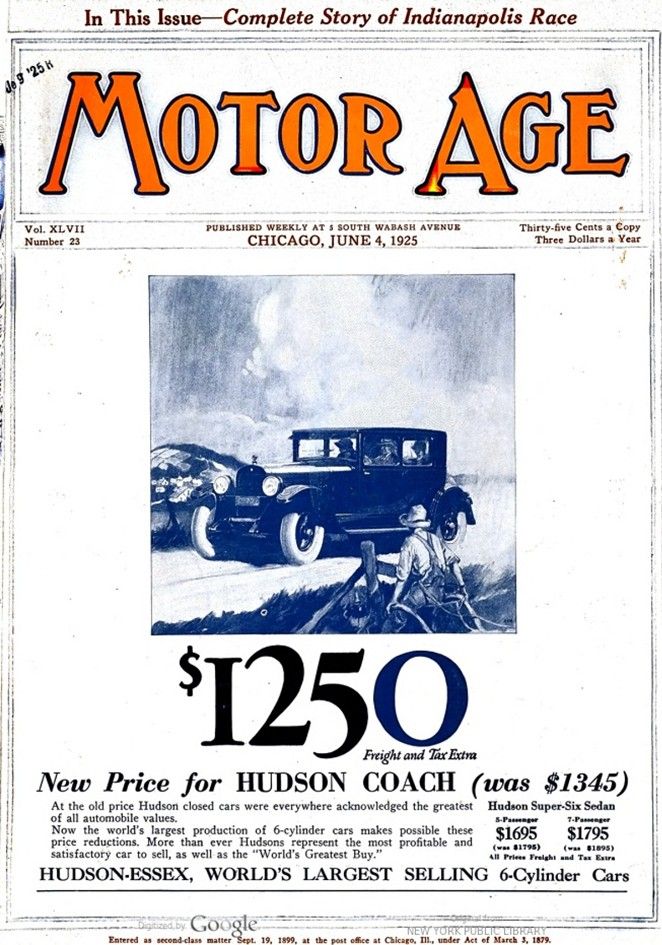




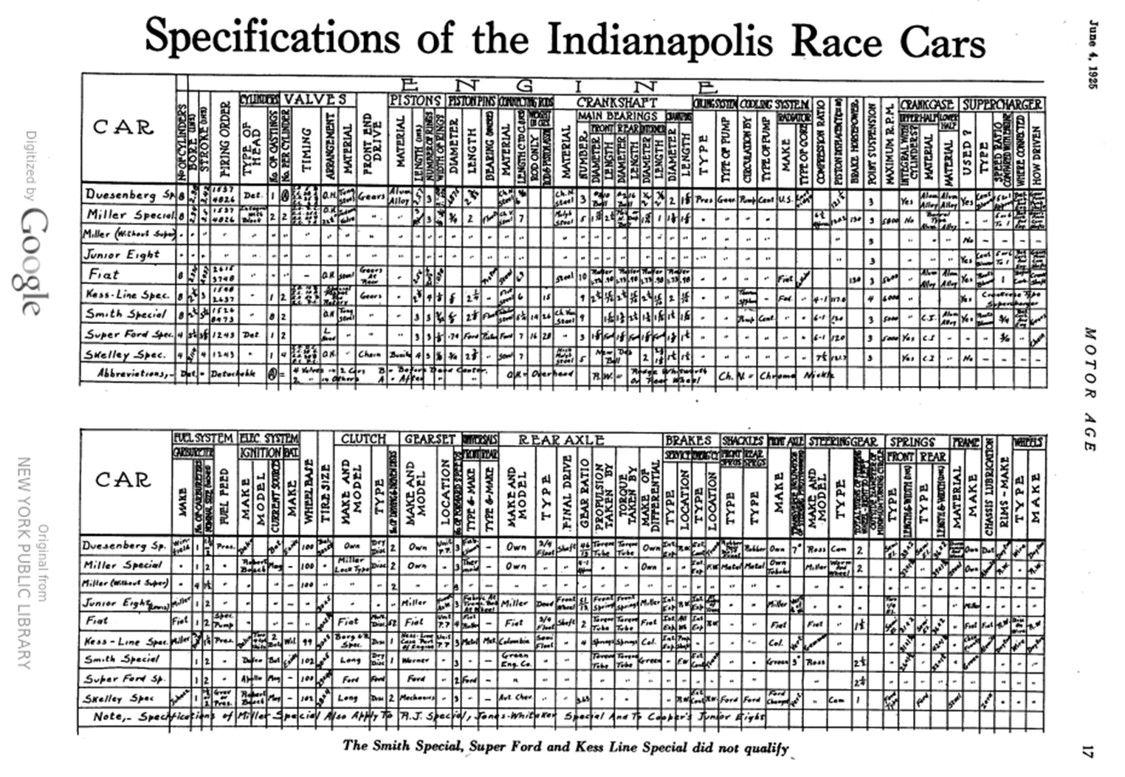

Text and jpegs by courtesy of hathitrust.org www.hathitrust.org, compiled by motorracinghistory.com
Motor Age, Vol. 47, No. 23, June 4, 1925
DePaolo in Duesenberg Sets New Indianapolis Record of 101.13 M. P. H.
Front-Drive Miller (Junior Eight) Driven by Dave Lewis and Bennett Hill and Duesenberg in Hands of Shafer and Morton Also Exceed 100 M.P.H. – Average in Thirteenth International 500 Mile Sweepstakes
By SAM SHELTON
INDIANAPOLIS, May 30. – A MEMORIAL of achievement to the honor of the courageous young Americans who have given their lives for the advancement of motor car design was written here today when three of the speediest and sturdiest of racing cars finished 500 miles on the brick speedway at an average of more than 100 miles per hour.
It was motordom’s holiday, and amid patriotic and inspiring scenes more than 100,000 persons saw new accomplishments, brilliantly won, for the progress of a great industry and the advancement of those who live today and tomorrow, as the highest tribute of respect and honor to those who have gone before.
Army airplanes overhead, American flags flying, a band of nearly 1,000 members rendering stirring and patriotic music, a day nearly perfect although a bit warm, made the occasion one in which the spiritual stimulation that goes with Memorial Day, and all that it means in the history of our country, was not lacking.
As a spectacle none of the 12 International 500-mile speedway races that have gone before could have surpassed the tenseness and the thrills of this the thirteenth and safest of them all. It was a matter of great gratification to spectators and management that in establishing the new record of 101.13 miles per hour no driver was seriously hurt, and the only accidents recorded were of a minor nature.
To Peter DePaolo goes the honor of driving the winning car, and the car itself, a Duesenberg Special, flashing marvelous speed at the driver’s will, bestows a generous share of credit upon its builders, Fred S. and August Duesenberg of Indianapolis.
But accomplishment no less worthy was that of the Miller front wheel drive entered as a Junior Eight by R. C. Durant Car and driven at first by Dave Lewis and at the finish by daring little Bennett Hill. Making only two stops this car, racing at Indianapolis for the first time, showed consistent speed and performance that would not acknowledge defeat until the very last lap.
Second Consecutive Duesenberg Victory
Peter DePaolo hurled his Duesenberg through the 500 miles in 4 hours, 56 minutes and 39.47 seconds, and only 53 seconds later Bennett Hill flashed across the line for second place. DePaolo’s average was 101.13 m.p.h. and that for the Junior Eight was 100.82. Wade Morton driving the Duesenberg Special that was started by Phil Shafer was third with an average of 100.18 m.p.h. These were the three cars to exceed the 100-mile average and furnish the thrills of a close finish. Harry Hartz in a Miller Special brought in the fourth car to exceed the average speed of last year’s winner. His average was 98.89 m.p.h., and the winning speed last year was 98.23, made by L. L. Corum and Joe Boyer in a Duesenberg. Thus, Duesenberg has won the race two years in succession, and this year out of four cars of the Duesenberg make entered in the race two were among the first three to finish.
The Junior Eight front wheel drive was a center of interest from the start. Another front drive Miller, a companion to this car, had been entered by Harry Miller, veteran builder of racing cars, and was to have been driven by Bennett Hill, but Hill found this car not to his liking and with the consent of the drivers he was permitted to start in a regular rear drive Miller and the other front drive was withdrawn.
When in the course of the race Hill’s Miller was eliminated, he was selected to relieve Dave Lewis at the wheel of the Junior Eight Miller and he demonstrated two things, first that the front drive creation has speed to burn, and second, that he is a master driver of that type of vehicle.
DePaolo was a promising contender from the start. Taking the lead on the first lap he held it until the fifty-fourth lap and then it was taken from him by his teammate, Phil Shafer in Duesenberg No. 9. DePaolo’s car was No. 12. DePaolo at this time had slackened his speed somewhat, but a little later he demonstrated that at will, he could take the lead and hold it. After he had relegated Shafer to second place, he held the lead until he was forced to stop for a tire change and oil and fuel. Meanwhile Dave Lewis in the front wheel drive car had been steadily forging ahead, passing Shafer and others and taking the lead while DePaolo’s Duesenberg was at the pit.
Batten Relieves De Paolo
When DePaola’s car came out of the pit it was driven by Norman Batten – young DePaola was taking a much-needed rest. Batten, although driving skillfully, could not maintain the pace set by DePaolo and gradually the Duesenberg fell back.
Batten remained at the wheel of the Duesenberg only 34 minutes and during that time the leadership fluctuated, but when the car was called in and DePaolo put back in the pilot’s seat Lewis in his Junior Eight front drive was well in the lead. DaPaolo touched his Duesenberg with the magic that made it spurt forward with renewed energy. One after another of the intervening cars he passed until he was less than 16 seconds behind Lewis and gaining rapidly.
And then with the grandstands wild and almost breathless with the tenseness of the situation, Lewis signaled his pitmen and was seen to slow up. DePaolo instantly passed him, and Lewis overran his pit, so that he had to go around again, losing additional time. Lewis, having driven about 450 miles without relief, was exhausted. Bennett Hill hopped to the seat and was off amid cheers.
Hill Shows Speed Flash
Then and there a new demonstration of speed was uncovered. From more than a lap behind Hill began to creep up on DePaolo. The front drive Miller-Junior Eight was performing marvelously. Well balanced, low, speedy, it took the turns almost as rapidly as the stretches. In the 188th lap the two cars were running almost neck and neck down the home ’stretch, the Duesenberg being a lap ahead. Just before going into the turn Hill passed DePaolo, getting into the same lap with him. With only 11 laps to go Hill set out to do his best and the fact that at the finish he was only about half a lap behind tells the story.
Behind the thrilling scenes of the track competition lies the contest of the master builders, Duesenberg and Miller, to produce America’s fastest racing cars. For two years at Indianapolis Duesenberg has won, but always Miller has been but a shadow behind.
In this year’s race 17 of the Millers took part and four of the Duesenbergs. Outwardly the cars are much alike, but mechanically there are wide differences. Both made use of superchargers this year, Duesenberg on all four of his cars and Miller on most of his. The winning Duesenberg last year was supercharged.
The racing cars this year were per- mitted a maximum of 122 cubic inches piston displacement, but next year this will be reduced to 91 inches and further efforts will be made to develop high-speed, small-bore engines.
Charles M. Schwab, president of the Bethlehem Steel Corporation, and chairman of the board of the Stutz Motor Car Corporation of America, was official referee of the race. He was one of the principal speakers at a dinner given the evening preceding race at the Indianapolis Athletic Club by the Indiana Section of the Society of Automotive Engineers and the Indianapolis Chamber of Commerce.

Airplane view of 2½ mile Indianapolis Motor Speedway, where thirteen International Sweepstakes races have been held. Inset is photograph of Pete DePaolo just after he had won thirteenth race with new record of 101.13 m.p.h
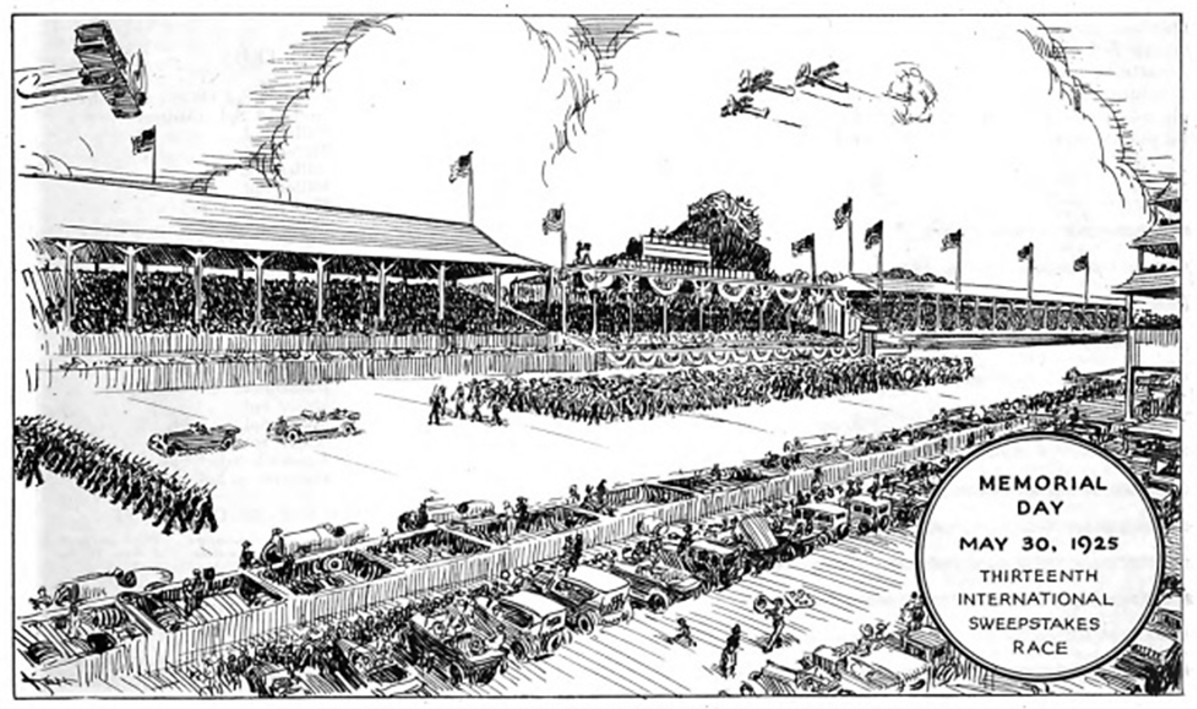
Just before the race started – Drawn by W. V. Kenworthy, Motor Age staff artist
MEMORIAL DAY MAY 30, 1925 – THIRTEENTH INTERNATIONAL SWEEPSTAKES RACE
